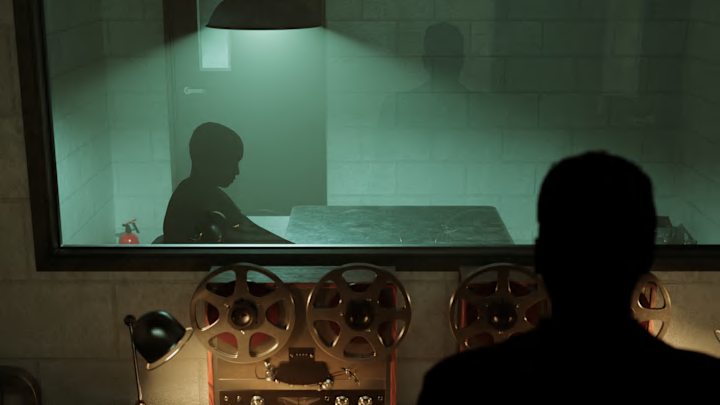It’s a familiar scene from every police procedural: In one brightly lit room, a perp is being questioned. In an adjacent room, officers watch the proceedings in near darkness, downing cup after cup of coffee. Between the rooms is a two-way mirror, which allows the officers to watch the suspect’s questioning without being seen. But how is that even possible?
Traditional vs. Two-Way Mirrors
Traditional mirrors are created using a process called “silvering,” in which a coating of tin and then a reflective material (such as silver or aluminum) are applied to the back of a pane of glass. Next comes a layer of copper and two coatings of paint, which protect the reflective coating and also ensures that all of the light is reflected back at the person looking in the mirror. This makes it impossible to look through a regular mirror.
The trick of the two-way mirror is accomplished through manufacturing and lighting. To make this type of mirror (which are also sometimes referred to as one-way mirrors), a thin layer of metal is applied to the front of a pane of glass. The layer is so thin that only half of the light that hits it is reflected back; the rest goes through the pane.
Let There Be Light

In order for the mirror to work properly, one side (the interrogation room, for example) must be very bright, while the other side (the police observation room) must be dark. The bright light in the interrogation room reflects back off the mirror’s surface; all a criminal sees when he looks at it is his own reflection. The observation room, meanwhile, is kept dark so that very little light is transmitted into the interrogation room. The large amount of light coming from the alleged criminal’s side is what allows the detectives to observe his activity as if they were looking through a regular tinted window.
Make the light levels the same in both rooms, however—either by turning the lights in the observation room on or switching the lights in the interrogation room off—and the people in each room will be able to see into the other.
There are many uses for two-way mirrors besides interrogation rooms, including teleprompters, scientific and marketing research, security cameras, and to create various stage effects.
How to Check for a Two-Way Mirror
Let’s say you’re not in an interrogation room, but instead in a hotel room, and you want to check if the mirrors there are one-way or two-way. There’s a hack for that: Simply point your fingernail (or any object) against the glass; if there’s a gap, it’s a one-way mirror. If there’s no gap, it’s a two-way (and you should probably find another hotel). According to IFL Science, this hack works “due to where the reflective part of the mirror is. In a {two-way} mirror the reflective part is often laid right at the surface; with an actual mirror, there is often a layer of clear glass to protect the reflective part.”
WikiHow provides another simple way to tell a two-way from a one-way mirror: Turn off all the lights, then turn on the light on your phone and shine it at the mirror. If it’s a two-way, you’ll be able to see right through it.
Discover More Answers to Big Questions:
A version of this story ran in 2012; it has been updated for 2025.
